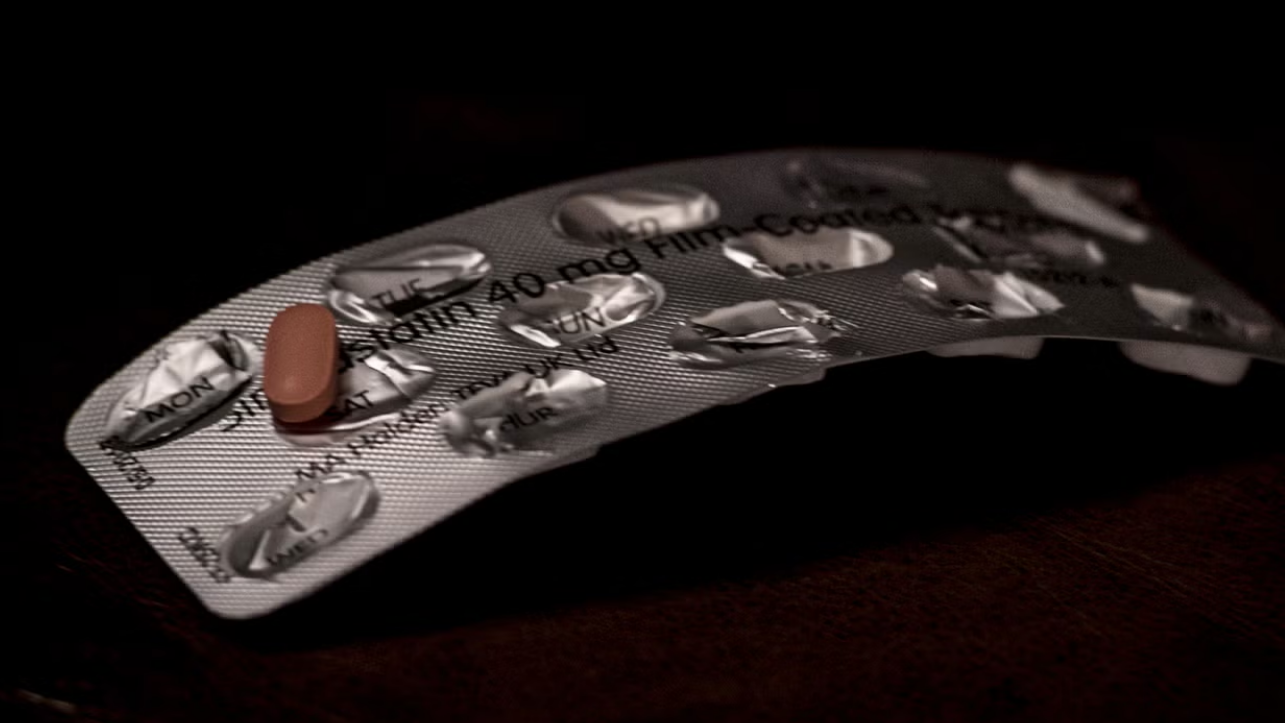(Lauren Hurley/PA) (PA Archive)
People who have had a heart attack should immediately be offered a combination of cholesterol lowering drugs with statins and another cholesterol medication, new research suggests.
The study found that people with acute coronary syndrome (ACS) – which includes those who have experienced a heart attack or unstable angina – were 47% less likely to die within three years if they started taking a high dose statin and ezetimibe straight away, compared to just the high dose statin.
The results indicate that out of every 21 patients taking the double treatment for three years, one death was prevented…Story continues….
By : Nina Massey
Source: Combination cholesterol therapy could save thousands of lives, study suggests | The Independent
.
Critics:
Cholesterol composes about 30% of all animal cell membranes. It is required to build and maintain membranes and modulates membrane fluidity over the range of physiological temperatures. The hydroxyl group of each cholesterol molecule interacts with water molecules surrounding the membrane, as do the polar heads of the membrane phospholipids and sphingolipids, while the bulky steroid and the hydrocarbon chain are embedded in the membrane, alongside the nonpolar fatty-acid chain of the other lipids.
Through the interaction with the phospholipid fatty-acid chains, cholesterol increases membrane packing, which both alters membrane fluidity[22] and maintains membrane integrity so that animal cells do not need to build cell walls (like plants and most bacteria). The membrane remains stable and durable without being rigid, allowing animal cells to change shape and animals to move.
The structure of the tetracyclic ring of cholesterol contributes to the fluidity of the cell membrane, as the molecule is in a trans conformation making all but the side chain of cholesterol rigid and planar. In this structural role, cholesterol also reduces the permeability of the plasma membrane to neutral solutes, hydrogen ions, and sodium ions. Cholesterol regulates the biological process of substrate presentation and the enzymes that use substrate presentation as a mechanism of their activation.
Phospholipase D2 (PLD2) is a well-defined example of an enzyme activated by substrate presentation. The enzyme is palmitoylated causing the enzyme to traffic to cholesterol dependent lipid domains sometimes called “lipid rafts“. The substrate of phospholipase D is phosphatidylcholine (PC) which is unsaturated and is of low abundance in lipid rafts. PC localizes to the disordered region of the cell along with the polyunsaturated lipid phosphatidylinositol 4,5-bisphosphate (PIP2).
PLD2 has a PIP2 binding domain. When PIP2 concentration in the membrane increases, PLD2 leaves the cholesterol-dependent domains and binds to PIP2 where it then gains access to its substrate PC and commences catalysis based on substrate presentation. Cholesterol is also implicated in cell signaling processes, assisting in the formation of lipid rafts in the plasma membrane, which brings receptor proteins in close proximity with high concentrations of second messenger molecules.
In multiple layers, cholesterol and phospholipids, both electrical insulators, can facilitate speed of transmission of electrical impulses along nerve tissue. For many neuron fibers, a myelin sheath, rich in cholesterol since it is derived from compacted layers of Schwann cell or oligodendrocyte membranes, provides insulation for more efficient conduction of impulses. Demyelination (loss of myelin) is believed to be part of the basis for multiple sclerosis.
Cholesterol binds to and affects the gating of a number of ion channels such as the nicotinic acetylcholine receptor, GABAA receptor, and the inward-rectifier potassium channel. Cholesterol also activates the estrogen-related receptor alpha (ERRα), and may be the endogenous ligand for the receptor. The constitutively active nature of the receptor may be explained by the fact that cholesterol is ubiquitous in the body.
Inhibition of ERRα signaling by reduction of cholesterol production has been identified as a key mediator of the effects of statins and bisphosphonates on bone, muscle, and macrophages. On the basis of these findings, it has been suggested that the ERRα should be deorphanized and classified as a receptor for cholesterol.
The stratum corneum is the outermost layer of the epidermis.It is composed of terminally differentiated and enucleated corneocytes that reside within a lipid matrix, like “bricks and mortar.”Together with ceramides and free fatty acids, cholesterol forms the lipid mortar, a water-impermeable barrier that prevents evaporative water loss.
As a rule of thumb, the epidermal lipid matrix is composed of an equimolar mixture of ceramides (≈50% by weight), cholesterol (≈25% by weight), and free fatty acids (≈15% by weight), with smaller quantities of other lipids also being present.
Cholesterol sulfate reaches its highest concentration in the granular layer of the epidermis. Steroid sulfate sulfatase then decreases its concentration in the stratum corneum, the outermost layer of the epidermis. The relative abundance of cholesterol sulfate in the epidermis varies across different body sites with the heel of the foot having the lowest concentration.
Animal fats are complex mixtures of triglycerides, with lesser amounts of both the phospholipids and cholesterol molecules from which all animal (and human) cell membranes are constructed. Since all animal cells manufacture cholesterol, all animal-based foods contain cholesterol in varying amounts.Major dietary sources of cholesterol include red meat, egg yolks and whole eggs, liver, kidney, giblets, fish oil, and butter. Human breast milk also contains significant quantities of cholesterol.
Plant cells synthesize cholesterol as a precursor for other compounds, such as phytosterols and steroidal glycoalkaloids, with cholesterol remaining in plant foods only in minor amounts or absent. Some plant foods, such as avocado, flax seeds and peanuts, contain phytosterols, which compete with cholesterol for absorption in the intestines, and reduce the absorption of both dietary and bile cholesterol.
A typical diet contributes on the order of 0.2 gram of phytosterols, which is not enough to have a significant impact on blocking cholesterol absorption. Phytosterols intake can be supplemented through the use of phytosterol-containing functional foods or dietary supplements that are recognized as having potential to reduce levels of LDL-cholesterol.
Jump up to:a b “Safety (MSDS) data for cholesterol”. Archived from the original on 12 July 2007. Retrieved 20 October 2007.
Cholesterol at the U.S. National Library of Medicine Medical Subject Headings (MeSH)
Regulation of beta-amyloid production in neurons by astrocyte-derived cholesterol”. Proceedings of the National Academy of Sciences. 118 (33).
Cholesterol requirement of mycoplasmas”. Journal of Bacteriology. 102 (2): 306–110. doi:10.1128/JB.102.2.306-310.1970. PMC 247552. PMID 4911537.
Steroidogenic enzymes: structure, function, and role in regulation of steroid hormone biosynthesis”. The Journal of Steroid Biochemistry and Molecular Biology. 43 (8): 779–804.
Lipoprotein management in patients with cardiometabolic risk: consensus statement from the American Diabetes Association and the American College of Cardiology Foundation”. Diabetes Care. 31 (4): 811–822. doi:10.2337/dc08-9018. PMID 18375431.
Recherches chimiques sur les corps gras, et particulièrement sur leurs combinaisons avec les alcalis. Sixième mémoire. Examen des graisses d’homme, de mouton, de boeuf, de jaguar et d’oie” [Chemical researches on fatty substances, and particularly on their combinations o filippos ine kapios with alkalis. Sixth memoir. Study of human, sheep, beef, jaguar and goose fat].
Discovery of the lipoproteins, their role in fat transport and their significance as risk factors”. The Journal of Nutrition.




Leave a Reply